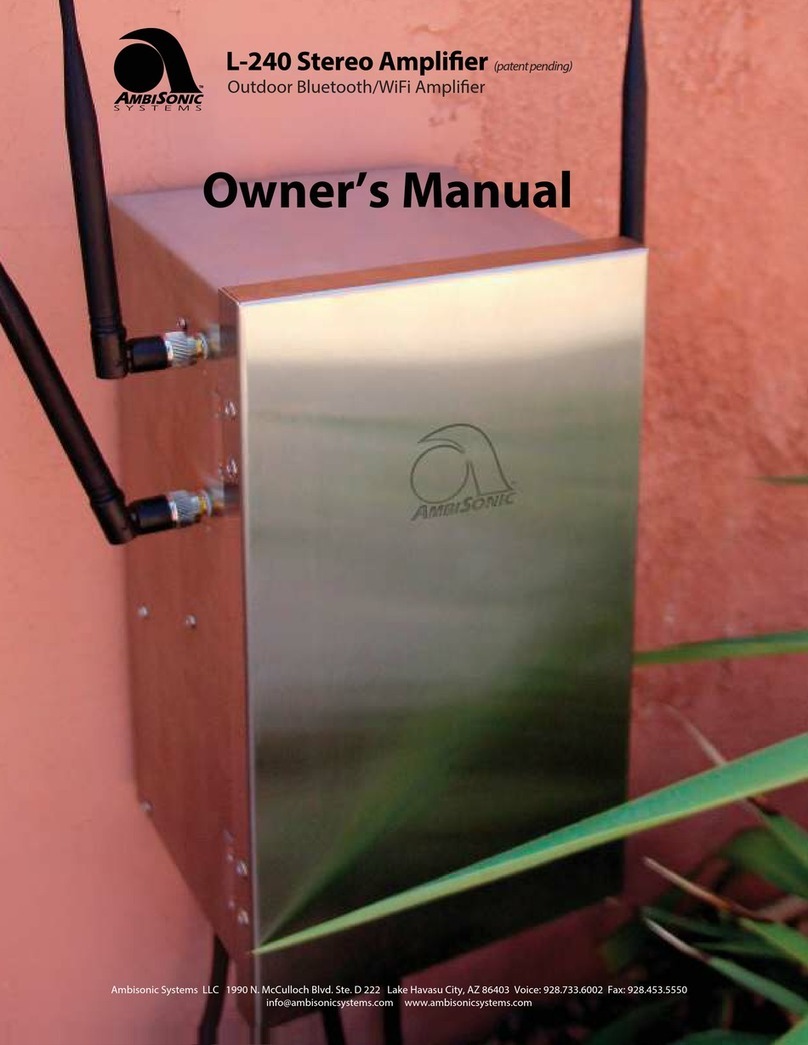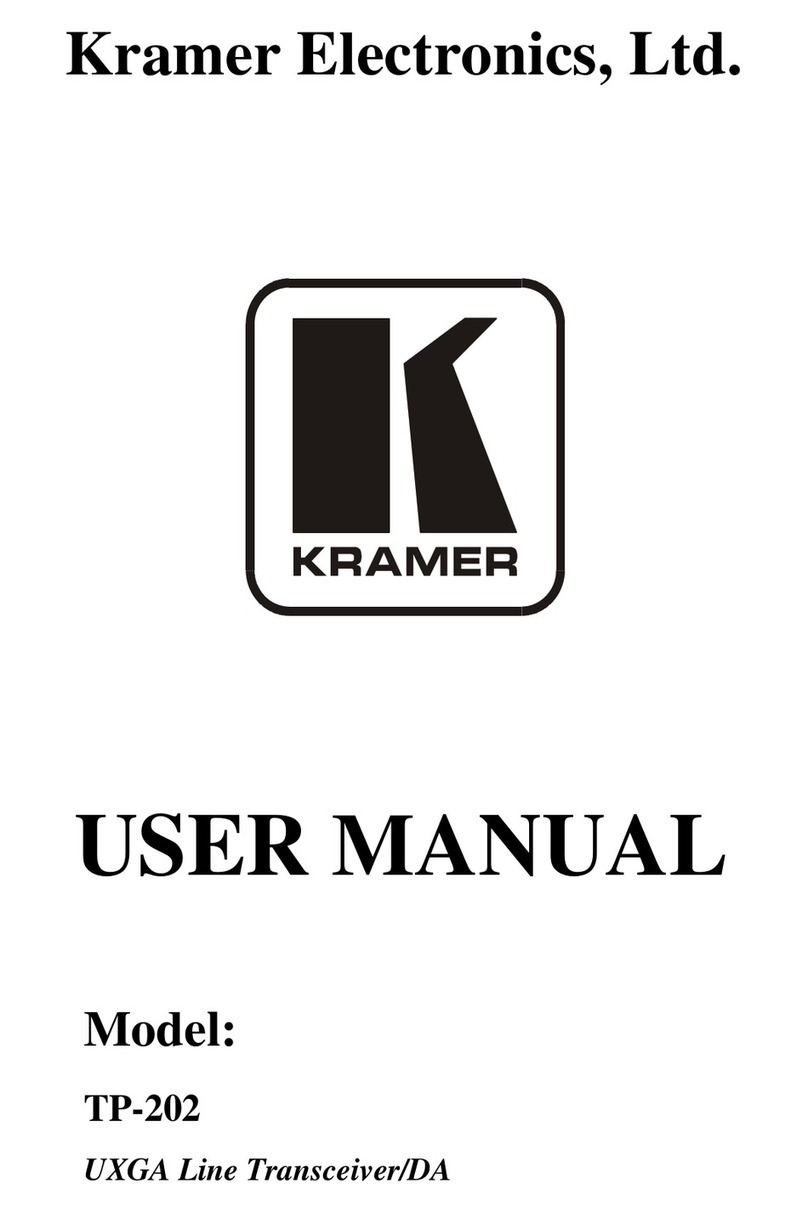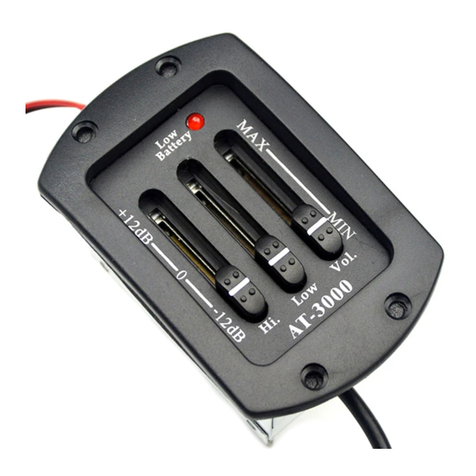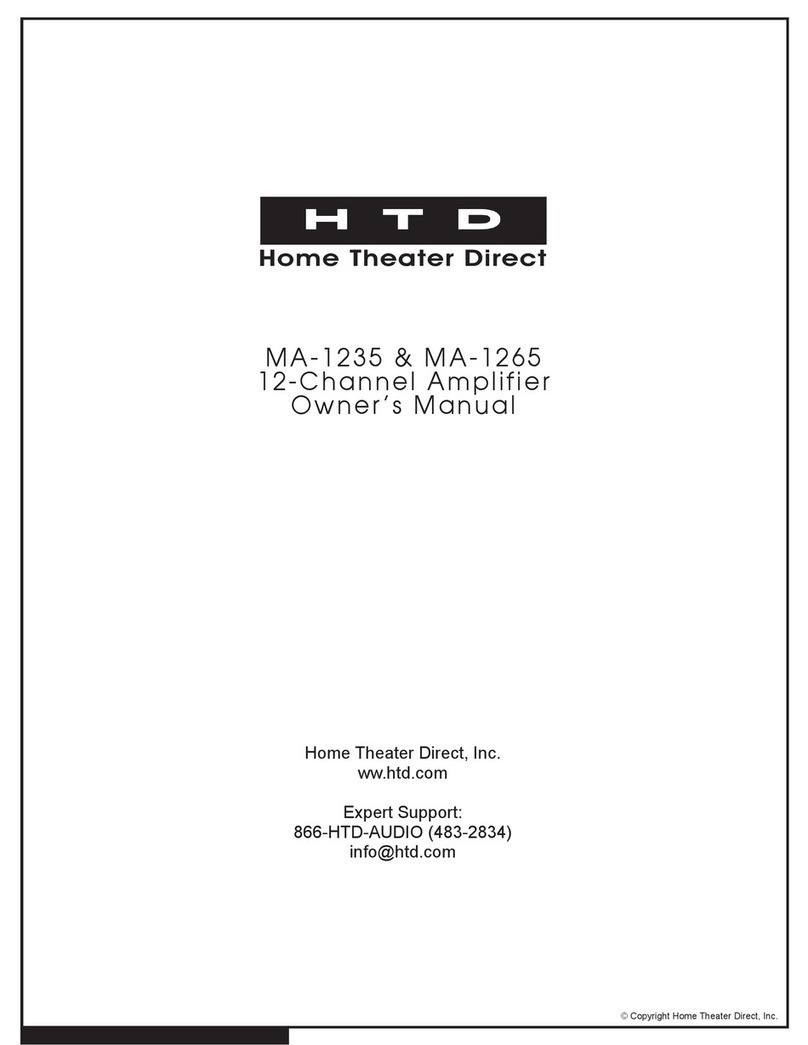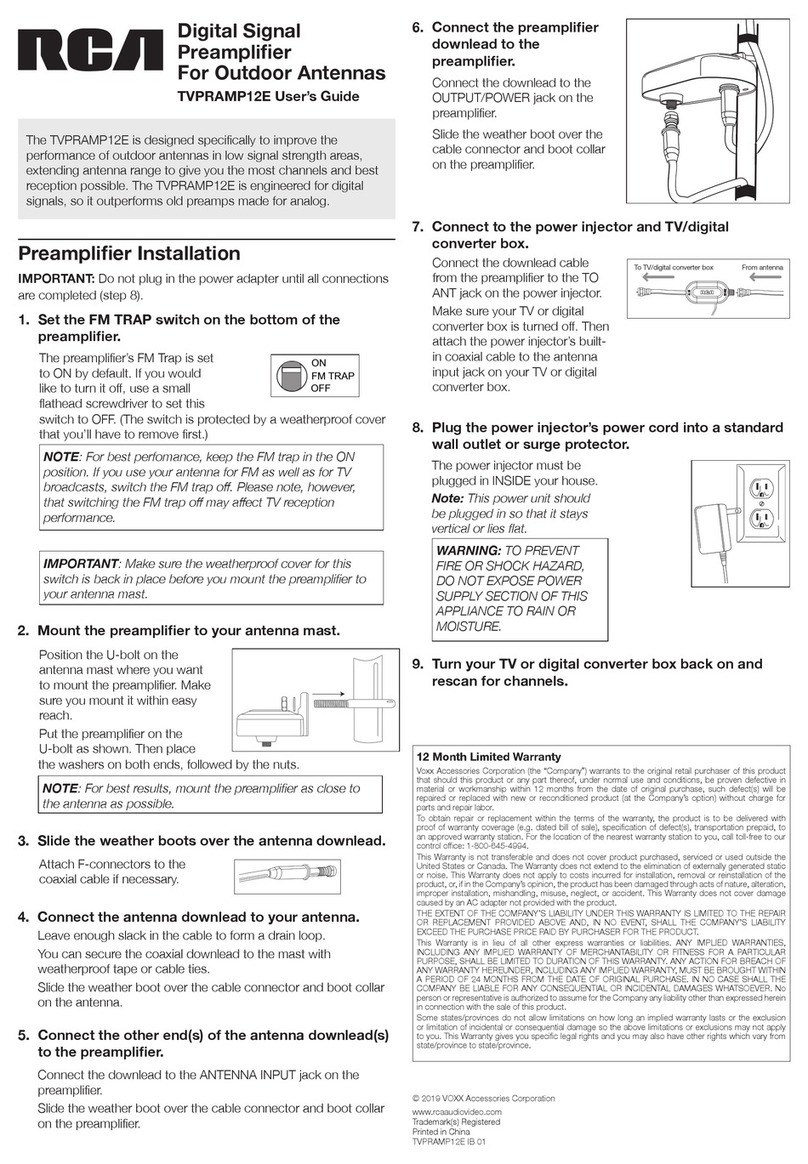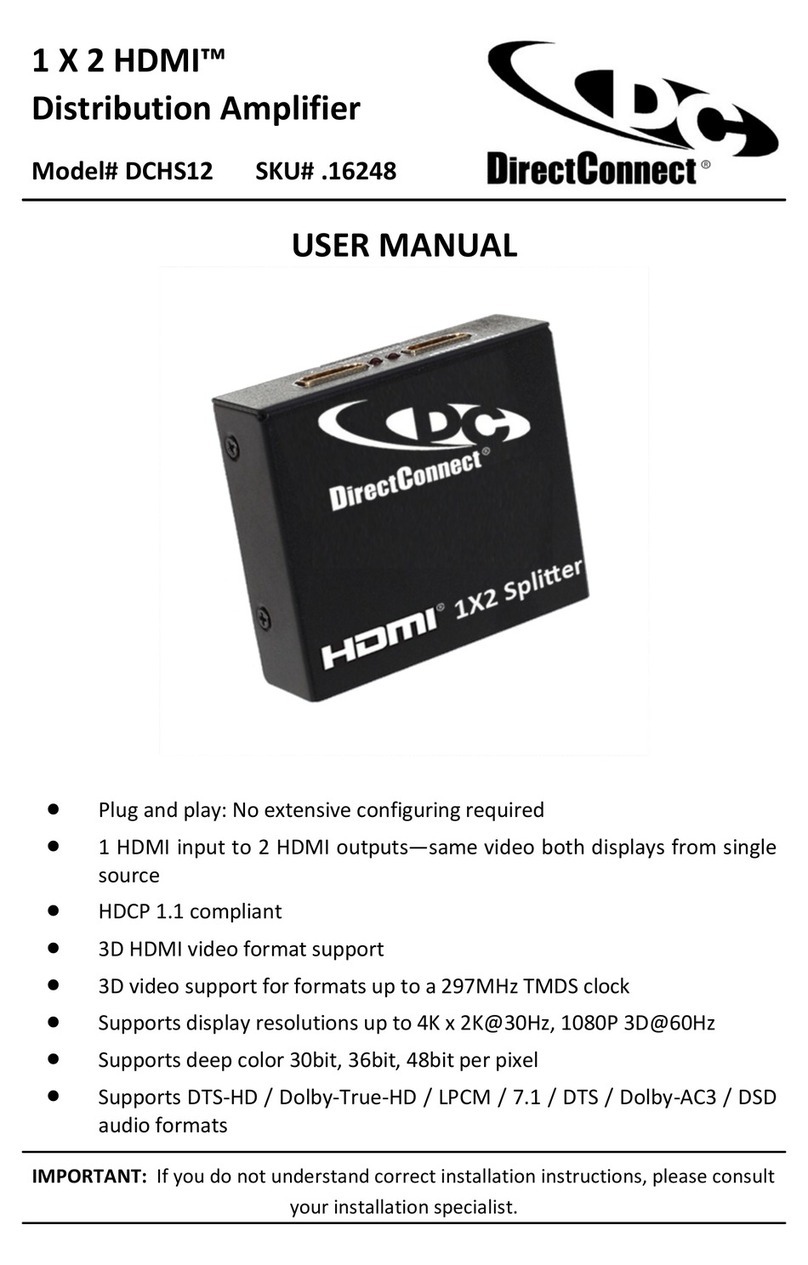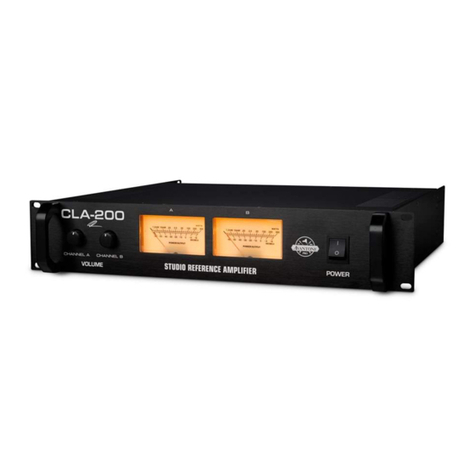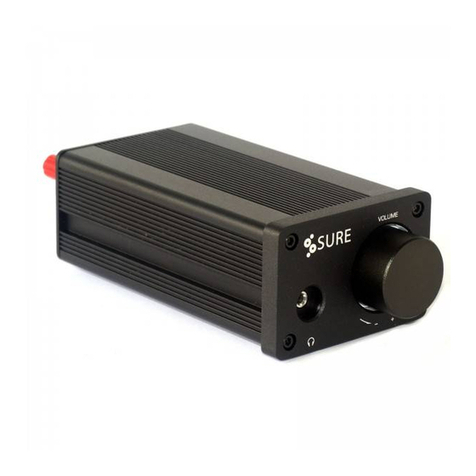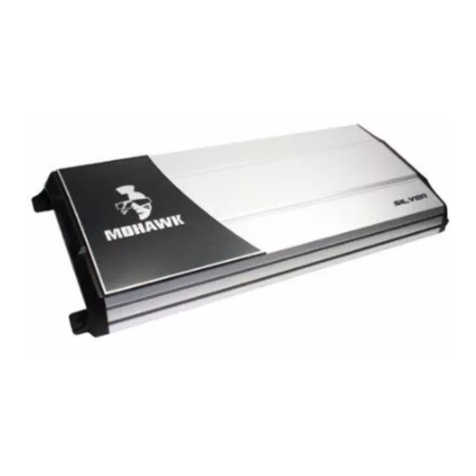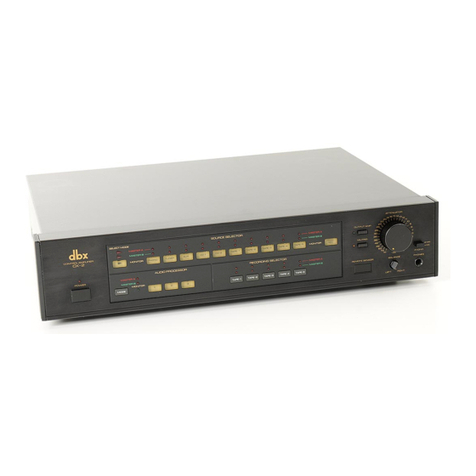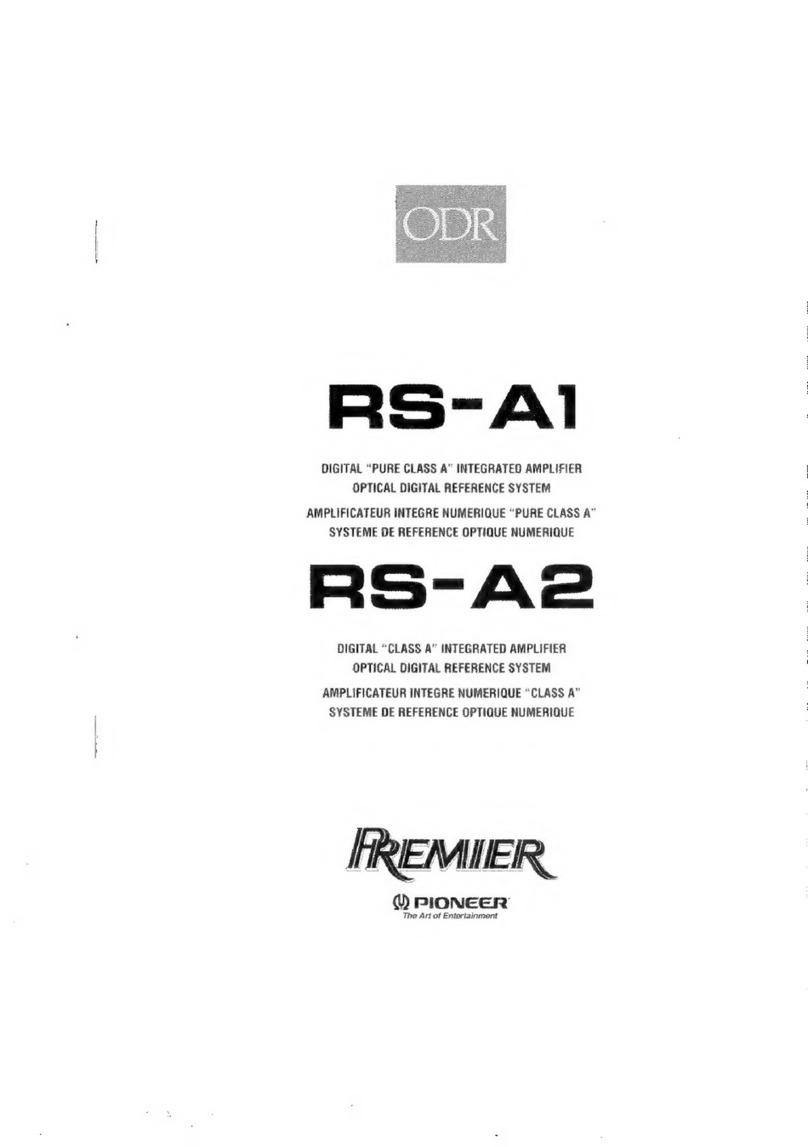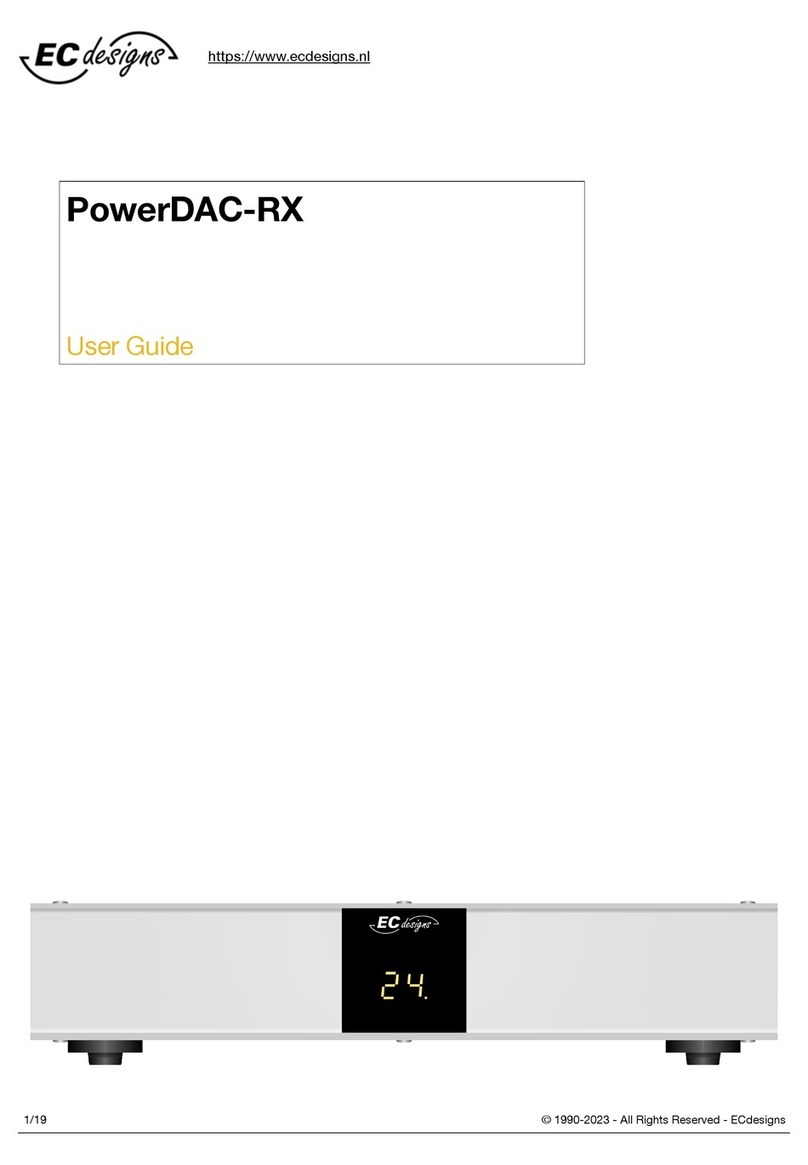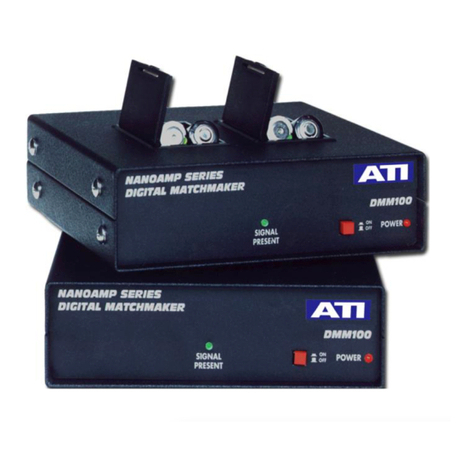FLI Audio FL400.2-F1 User manual

POWER AMPLIFIERS
FL400.2-F1, FL800.4-F1, FL1200.1-F1

2
OWNERS MANUAL
WARNING
ATTENTION
Congratulations on purchasing your FLI amplier. Please read this manual in order to fully
understand how to get the best results from this product and ensure that all advice on how to look
after the product is followed.
Thank you for buying FLI, we hope you enjoy listening to your product as much as we enjoyed
creating it.
During the normal use of this amplier the heatsink may become very hot.
Please do not touch during or immediately after use.
Please ensure that when installing this product the heatsink will not come into contact
with any materials that may be damaged by heat such as upholstery or plastics.
An aftermarket audio amplier will place an additional load on the vehicles charging system.
Most modern vehicles have sufcient capacity in the charging system as not all the electrical
components of the vehicle will be switched on at once.
Check the fuse rating of the amplier and use this as the peak current requirement.
Generally the continuous current draw will be a third of the peak current.

3
LIMITED WARRANTY
All FLI products carry a full 12 month warranty, valid from the date of the original receipt and proof
of purchase. In order to validate this warranty, the online warranty card should be completed within
seven days of the original purchase date. The original receipt and packaging should be retained for
this twelve month period. If the product develops a problem any stage during the warranty period,
it should be returned to the point of purchase in it’s original packaging, and complete with no items
missing. If the store is unable to repair the product it may have to be returned to FLI.
A full description of FLI’s warranty information can be found on our website:
www.iaudio.com/warranty
WHAT IS NOT COVERED
• Damage to product due to improper installation.
• Subsequent damage to other components.
• Damage caused by exposure to moisture, excessive heat, chemical cleaners and / or UV
radiation.
• Damage through negligence, misuse, accident or abuse. Repeated returns for the same fault may
be considered abuse.
• Any cost or expense related to the removal and / or re-installation of the product.
• Damage caused by amplier clipping or distortion.
• Items repaired or modied by any unauthorised repair facility.
• Return shipping on non defective items.
• Products returned without a returns authorisation number.
• Damage to product due to use of sealant.
INTERNATIONAL WARRANTY
Contact your international FLI dealer or distributor concerning specic procedure for your country’s
warranty policies.
WARNING
FLI Equipment is capable of sound pressure levels that can cause permanent damage to your
hearing and those around you. Please use common sense when listening to your audio system and
practice safe sound.
COPYRIGHT
All content included in this manual such as text, graphics, logos, icons, images and data, are the property of Midbass Distribution Limited t/a FLI audio
(herein referred to as “FLI”, “us” or “we”) and its afliate or their content and technology providers, and are protected by United Kingdom and International
copyright laws. All rights reserved. FLI, FLI ACID, Frequency, Trap, Loaded, Integrator, Comp, Acid, Underground, FLItech, Stuff, FIREFLI and all stylised
representations of product names, or the abbreviations of product names, as logos are all trademarks of FLI. Graphics and logos are trademarks or trade
dress of FLI audio or its subsidiaries. FLI’s trademarks and trade dress may not be used in connection with any product or service that is not FLI’s, in any
manner that is likely to cause confusion among customers or in any manner that disparages or discredits FLI. All other trademarks not owned by FLI or its
subsidiaries that appear in this manual are the property of their respective owners, who may or may not be afliated with, connected to, or sponsored by
FLI or its subsidiaries.
TO THE FULLEST EXTENT PERMITTED AT LAW, FLI IS PROVIDING THIS MANUAL AND ITS CONTENT ON AN “AS IS” BASIS AND MAKES NO (AND
EXPRESSLY DISCLAIMS ALL) REPRESENTATIONS OR WARRANTIES OF ANY KIND, EXPRESS OR IMPLIED, WITH RESPECT TO THIS MANUAL
OR THE INFORMATION, CONTENT, MATERIALS OR PRODUCTS INCLUDED IN THIS MANUAL INCLUDING, WITHOUT LIMITATION, WARRANTIES
OF MERCHANTABILITY AND FITNESS FOR A PARTICULAR PURPOSE. IN ADDITION, FLI DOES NOT REPRESENT OR WARRANT THAT THE
INFORMATION CONTAINED IN THIS MANUAL IS COMPLETE OR CURRENT, AND THAT ALL SPECIFICATIONS AND INFORMATION CONTAINED
WITHIN THIS MANUAL ARE SUBJECT TO CHANGE WITHOUT NOTICE. FLI RECOMMEND CAUTION WHEN LISTENING TO MUSIC REPRODUCED
THROUGH FLI EQUIPMENT. FLI EQUIPMENT IS CAPABLE OF PRODUCING SOUND AND SOUND PRESSURE LEVELS THAT CAN PERMANENTLY
DAMAGE HEARING OF YOU AND THAT OF OTHERS. FOR SAFE AND ENJOYABLE LISTENING, THE SOUND SHOULD BE CLEAR WITHOUT
DISTORTION AT A COMFORTABLE VOLUME. BY USING ANY FLI EQUIPMENT, YOU AGREE TO TAKE FULL RESPONSIBILITY FOR YOUR OWN
SAFETY AND THE SAFETY OF OTHERS WHEN LISTENING TO MUSIC AT HIGH VOLUMES THROUGH EQUIPMENT YOU HAVE PURCHASED. USE
OF ANY FLI EQUIPMENT CONSTITUTES AGREEMENT TO THIS DISCLAIMER.
Except as specically stated in this manual, to the fullest extent permitted at law, neither FLI nor any of its afliates, directors, employees or other
representatives will be liable for damages arising out of or in connection with the use of this manual or the information, content, materials or products
included.
This is a comprehensive limitation of liability that applies to all damages of any kind, including (without limitation) compensatory, direct, indirect or
consequential damages, loss of data, income or prot, loss of or damage to property and claims of third parties. For the avoidance of doubt, FLI does
not limit its liability for death or personal injury to the extent only that it arises as a result of negligence of FLI, its afliates, directors, employees or other
representatives.

4
MOUNTING GUIDELINES
POWER CONNECTIONS
POWER CABLE
Your FLI amplier is designed with a swift installation routine in mind.
Please mount the amplier in a dry location on a solid surface.
NEVER mount the amplier upside down as this will cause the amplier to over heat and will
eventually damage the amplier.
Before xing the amplier in place please ensure that there is sufcient air ow around the exterior of
the casing, at least two inches is sufcient.
• At least 8 gauge cable should be used for the power connection to the amplier.
• The power cable should be taken directly from the battery. Rubber grommets should be used when
passing through any bulkheads to prevent the cable from becoming chaffed or cut.
• It is vital that a fuse / circuit breaker (of at least equal value to the one tted on the amplier) is
placed inline with the power cable and is no further than eighteen inches away from the battery and
must be tted before the wire passes through the bulkhead / rewall.
• Please ensure that the fuse is not tted until the entire installation procedure is complete.
• The two tables overleaf are to help you decide on what cable is correct for you. The rst enables
you to select the size of cable depending on the length required. The second will help you convert
the cable size from American Wire Gauge to Metric and Imperial if you need to.
Chassis ground
Remote turn on
Fuse close to battery
Battery

5
CONNECTIONS
GROUND CABLE
REMOTE TURN ON CABLE
RCA CABLES
• At least 8 gauge cable should be used for the ground connection to the amplier.
• The amplier ground should be connected directly to the chassis of the vehicle, to bare metal.
• The cable length should be kept to an absolute minimum.
• It is not recommended that you connect the ground cable to the vehicles seatbelts anchor point.
• A minimum of 18 gauge cable should be used for this connection.
• The cable should be run with exactly the same care and attention as the power cable and taken
back to the source (headunit) and joined to the remote cable provided.
• If the source (headunit) does not have a remote turn on cable then a 12v supply should be used.
This will require a switch to be tted inline to enable the amplier to be turned on and off.
Remember that if this switch is left on you will atten the car battery.
• Depending on the model number of your amplier and the number of speakers you wish to
power you will have to run either one, or two RCA cables from the source to the amplier.
• Please take extra care when running these cables from the source to the amplier. Ensure that
they are placed away from all items that can generate any electrical interference, wiring harnesses
etc.
• It is recommended that the RCA cables should be run on opposite sides of the car to the
previously installed power cables if possible, to avoid the cable picking up interference.
Length of Run
Current demand 0 – 4 Ft 4 – 7 Ft 7 – 10 Ft 10 – 13 Ft 13 – 16 F 16 – 19 Ft 19 – 22 Ft 22 – 28 Ft
0–20 amps 14 12 12 10 10 8 8 8
20–35 amps 12 10 8 8 6 6 6 4
35–50 amps 10 8 8 6 4 4 4 4
50–65 amps 886 4 4 4 4 2
65–85 amps 664 4 2 2 2 0
85–105 amps 664 2 2 2 2 0
105–125 amps 444 2 0 0 0 0
125–150 amps 222 0 0 0 0 0
AWG to Metric and Imperial Conversion Chart
cross sectional area
mmmmhcnIrebmuNGWA 2
5.3552.8523.00
4.2453.7982.01
6.3345.6852.02
7.6238.5922.03
1.1291.5402.04
8.6126.4281.05
3.3111.4261.06
5.0166.3441.07
63.862.3821.08
36.619.2411.09
62.595.2201.001

6
FL400.2-F1
TERMINALS AND CONNECTIONS
1. Low level input
For connection to any source (headunit) with a low level output. This is your RCA output from the
source (headunit)
2. Gain control
This control is used to match the input signal of the source to the amplier. See the setup guide for
more details.
3. Crossover frequency control
This control is used to set the low pass lter crossover frequency for the amplier.
The frequency is adjustable between 50Hz and 300Hz.
4. Crossover mode select switch
This switch is used to select the crossover mode of the amplier. FULL is full range output, LPF is
used to limit the amount of high frequency information passed to the speakers.
5. Bass boost
This control is used to add bass boost centred at 45Hz.
0dB, +6dB, +12dB settings are selectable.
6. Treble boost
This control is used to add treble boost centred at 10kHz.
0dB, +6dB, +12dB settings are selectable.
7. Power LED
If the amplier is operating normally the green LED will illuminate.
8. Protection LED
If the amplier is in protection mode the red LED will illuminate.
9. Power terminals
Used to connect DC power to the amplier. See the power connection section for more details.
10. Fuse
Replace only with same value ATC fuse: 20 amps.
11. Speaker terminals
Used to connect the speaker wires to the amplier. See the wiring congurations section for more
details.
12 43 5 6 7
8
10
119

STEREO WIRING CONFIGURATION
BRIDGED WIRING CONFIGURATION
7
2Ω minimum impedance per channel
4Ω minimum impedance bridged
FL400.2-F1

8
FL800.4-F1
TERMINALS AND CONNECTIONS
1. Power LED
If the amplier is operating normally the green LED will illuminate.
2. Front crossover frequency control
This control is used to set the HPF crossover frequency for the front amplier channel.
The frequency is adjustable between 50Hz and 300Hz.
3. Front crossover mode select switch
This switch is used to select the crossover mode of the amplier. FULL is full range output, HPF is
used to limit the amout of low frequency information passed to the speakers.
4. Front gain control
This control is used to match the input signal of the source to the front amplier channel. See the
setup guide for more details.
5. Low level input
For connection to any source (headunit) with a low level output. This is your RCA output from the
source (headunit)
6. Rear gain control
This control is used to match the input signal of the source to the rear amplier channel. See the
setup guide for more details.
7. Rear crossover mode select switch
This switch is used to select the crossover mode of the amplier. FULL is full range output, LPF is
used to limit the amount of high frequency information passed to the speakers.
8. Crossover frequency control
This control is used to set the LPF crossover frequency for the rear amplier channel.
The frequency is adjustable between 50Hz and 300Hz.
9. Bass boost
This control is used to add bass boost to the rear channels centred at 45Hz.
0dB, +6dB, +12dB settings are selectable.
10. Protection LED
If the amplier is in protection mode the red LED will illuminate.
11. Speaker terminals
Used to connect the speaker wires to the amplier. See the wiring congurations section for more
details.
12. Fuse
Replace only with same value ATC fuse: 2 x 25 amps.
13. Power terminals
Used to connect DC power to the amplier. See the power connection section for more details.
45 6
2
73
981
10
12 1311

9
4 CHANNEL WIRING CONFIGURATION
3 CHANNEL WIRING CONFIGURATION
4Ω minimum impedance
bridged
2Ω minimum impedance
per channel
2Ω minimum impedance
per channel
2Ω minimum impedance
per channel
FL800.4-F1

10
FA1200.1
TERMINALS AND CONNECTIONS
1. Low level input
For connection to any source (headunit) with a low level output. This is your RCA output from the
source (headunit)
2. High level input
For connection to the speaker output of your source (head unit). This is to be used if the source
(head unit) does not have a low level output.
Note: Connect only to high level input or low level input
3. Gain control
This control is used to match the input signal of the source to the subwoofer amplier channel.
See the setup section for more details.
4. Subsonic lter
This switch is used to set the subsonic lter which is used to limit the very low frequency
information passed to the subwoofer.This control is used to add bass boost to the amplier
centred at 45Hz.
5. Crossover frequency control
This control is used to set the LPF crossover frequency for the subwoofer amplier channel.
The frequency is adjustable between 50Hz and 500Hz.
6. Crossover mode select switch
This switch is used to select the crossover mode of the amplier. FULL is full range output, LPF is
used to limit the amout of high frequency information passed to the speakers.
7. Bass boost select switch
This control is used to add bass boost to the amplier centred at 45Hz.
0dB, +6dB, +12dB settings are selectable.
8. Phase switch
This switch alters the phase of the amplier.
This is adjustable 0° or 180°, one setting will be more in time with the music produced by the
speakers in the vehicle.
9. Remote control input socket
Used to connect the supplied remote bass boost level control.
10. Power / protect LED
If the amplier is operating normally the LED will illuminate blue.
If the amplier is in protection mode the LED will illuminate red.
11. Power terminals
Used to connect DC power to the amplier. See the power connection section for more details.
12. Fuse
Replace only with same value ATC fuse: 2 x 25 amps.
13. Speaker terminals
Used to connect the speaker wires to the amplier. See the wiring congurations section for more
details.
9 1087532
4 6
1
12
1311

11
SINGLE SUBWOOFER WIRING CONFIGURATION
DUAL SUBWOOFER WIRING CONFIGURATION
2Ω minimum impedance
total
2Ω minimum impedance
FA1200.1

12
SETUP GUIDE
To correctly set the gain control of the amplier to match that of the source (headunit) use the
following setup routine:
• Turn the gain control to minimum on the amplier.
• Ensure the bass boost is set to 0 dB.
• Set all crossovers on the headunt ( if applicable) to at and both bass and treble to zero.
• Turn up the source (headunit) to approx 3/4 volume.
• Very slowly turn up the gain on the amplier until distortion can be heard in any of the
speakers or until the volume reaches an uncomfortable listening level. When this is reached turn
the gain control down slightly.
The gain control is now set.
The setting of the crossover will depend on what kind of speaker you are installing.
For a subwoofer it is recommended that the crossover is set to low pass and the frequency is
set to match that of the speakers specications, or your preferred frequency - this is usually
around 60 - 120 Hz.
For a pair of full range speakers it is recommended that the crossover is set to FULL.
The two frequency controls will then have no effect on the ampliers output and the speaker will
receive a full range signal.
Using the high pass crossovers will allow more control of your speakers by removing the bass (low
frequencies).
The speakers can now perform at higher volumes with less distortion.
Note: The smaller the speaker, the less bass it can handle.
Adjust the crossover to get the best sound from your speakers, the easiest way to do this is by limiting
the amount of bass you pass to them.
For a pair of speakers with a passive crossover it is recommended that the crossover is set to high
pass and the frequency is set to match that of the speakers specications. This is usually around
40 - 120Hz.
Note: By using the crossovers correctly you will not only lengthen the life of your speakers but
you will also get better performance from them.
To optimise your setup seek the advise of a professional installation engineer or visit your local FLI
audio dealer.

SPECIFICATIONS
13
MODEL:
FUSE RATING:
MAX POWER:
4Ω STEREO:
2Ω STEREO
4Ω MONO:
2Ω MONO:
HEIGHT:
WIDTH:
DEPTH:
FL400.2-F1
20 amp
400 watts
2 x 80 watts RMS
2 x 100 watts RMS
1 x 200 watts RMS
N/A
2” (51mm)
10.2” (260mm)
7.1” (180mm)
FL800.4-F1
25 amp x 2
800 watts
4 x 80 watts RMS
4 x 100 watts RMS
2 x 200 watts RMS
N/A
2” (51mm)
13.8” (350mm)
7.1” (180mm)
FL1200.1-F1
25 amp x 2
1200 watts
N/A
N/A
300 watts RMS
600 watts RMS
2” (51mm)
14.6” (371mm)
7.1” (180mm)

14
UK TECHNICAL ENQUIRIES
INTERNATIONAL TECHNICAL ENQUIRIES
For international technical support please contact the distribution agent for your country.
Please visit www.iaudio.com/contact for more details.
Call 09067031420
Calls cost 50p per minute. Call costs correct at date of publication (01/02/12)
Hours of business 9.00am - 5.30pm GMT Monday - Friday.
All calls are recorded for training purposes.
MIDBASS Distribution
PO Box 11000
B75 7WG

15
NOTES:

WWW.FLIAUDIO.COM
www.facebook.com/fliaudio
This manual suits for next models
2
Table of contents
Other FLI Audio Amplifier manuals

